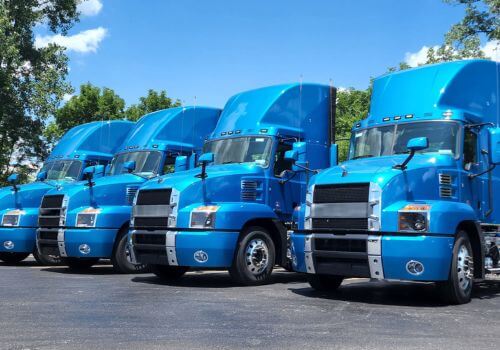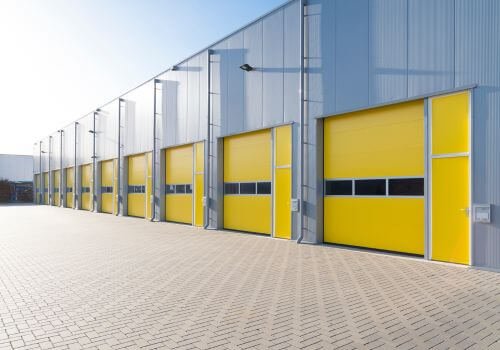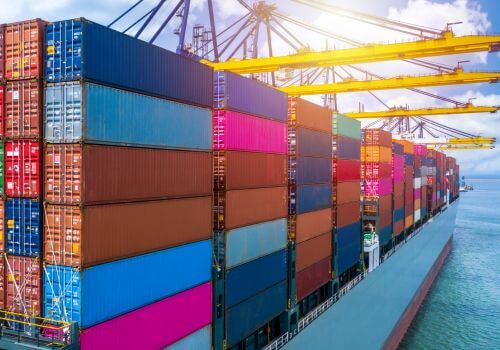What is freight class?
Freight class is a critical component of the logistics and shipping industry, particularly for less-than-truckload (LTL) freight. It is a standardized system developed by the National Motor Freight Traffic Association (NMFTA) that assigns a specific classification to different types of cargo based on a set of well-defined characteristics. This system not only streamlines communication between shippers and carriers but also ensures that pricing, packaging, and transport conditions are consistent and fair.
Freight class plays a major role in determining shipping rates. Each item is categorized into one of 18 different freight classes, ranging from Class 50 (very dense and low-risk items) to Class 500 (lightweight, bulky, or high-risk items). These classes influence how much it will cost to ship goods, how they must be handled, and how they should be packaged.
In logistics, understanding freight class is more than just technical knowledge; it’s a strategic necessity. Whether you’re a small business shipping products locally or a large-scale distributor managing nationwide freight, knowing how to classify your goods accurately can save time, money, and legal trouble.
Why is freight class important in logistics?
In the world of freight logistics, few factors are as influential as freight class. It has a direct impact on cost-efficiency, shipment accuracy, and the overall success of a logistics operation. Here’s why freight class matters so much:
Cost optimization
Freight class is directly tied to how much you’ll pay to ship goods via LTL freight. Lower freight classes typically equate to lower costs because they represent denser, easier-to-handle items. Misclassifying freight into a higher class can inflate costs unnecessarily, especially for recurring shipments.
Avoid reclassification fees
Carriers regularly audit shipments. If they find discrepancies between declared and actual freight class, they may reclassify the shipment and charge reclassification fees. These unexpected charges can disrupt budgets and cause operational delays.
Efficient load planning
Accurate freight classification helps logistics providers and carriers optimize space inside trailers. This is essential when multiple LTL shipments are consolidated in one truck. Poor classification can lead to inefficient space usage or load balancing issues.
Carrier relationships and trust
Consistently correct freight classifications enhance your reputation with carriers. It signals that your business is organized, transparent, and reliable. Over time, this can lead to better rates, priority service, and stronger partnerships.
4 main factors that determine freight class
Understanding how freight class is calculated begins with understanding the four core factors that influence it. Each shipment is evaluated using these criteria:
1. Density
Density refers to how heavy an item is in relation to the space it occupies. It’s calculated by dividing the total weight (in pounds) by the total volume (in cubic feet). The result helps carriers determine how efficiently the shipment uses space.
- High-density items (e.g., metal parts) receive lower freight classes.
- Low-density items (e.g., pillows or ping pong balls) receive higher freight classes.
Higher density means more product in less space, which is cost-effective for carriers. That’s why accurate measurements are crucial; rounding up dimensions can change the freight class and cost significantly.
2. Stowability
Stowability refers to how easily a shipment can be placed in a truck or container. Shipments that are irregularly shaped, hazardous, oversized, or non-stackable can be harder to stow efficiently.
For example, large rolls of carpet or oddly shaped equipment may limit how much else can be packed into the truck. Items that can’t be stacked on top of or around other cargo typically carry a higher freight class due to lost space.
Carriers prefer standard palletized loads with consistent dimensions that can be easily stacked and moved.
3. Handling
This factor assesses how easily a shipment can be loaded, unloaded, or moved. Items that require special handling equipment, extra manpower, or protective measures are considered more difficult to handle.
Examples include:
- Fragile electronics needing special bracing
- Perishable goods that require refrigeration
- Long, awkward items that need forklifts or cranes
The more complex the handling requirements, the higher the freight class. Carriers factor in the extra labor, tools, and risk involved when setting rates.
4. Liability
Liability involves the potential risk that a shipment carries for the carrier. This includes the chances of:
- Damage during transport
- Theft or pilferage
- Spoilage (for perishables)
- Legal issues with hazardous materials
High-liability items are typically classified in the higher range because they require greater insurance coverage or extra precautions.
The 18 freight classes explained
There are 18 standard freight classes. Each one corresponds to a density range and general risk profile. Here’s a breakdown of what they typically represent:
- Class 50: Extremely dense, heavy-duty items like bricks or metal bars.
- Class 55-65: Still dense and sturdy, including automotive parts or industrial equipment.
- Class 70-85: Moderately dense items such as canned goods, packaged liquids, or machinery.
- Class 92.5-125: Lower density items such as home appliances, textiles, or furniture.
- Class 150-250: Lightweight or more fragile items, such as assembled furniture or glassware.
- Class 300-500: Bulky, low-density, or high-risk items like foam cushions, lighting fixtures, or sculptures.
Understanding where your shipment falls on this scale is crucial to managing freight costs and expectations.
How to calculate freight class
Accurately calculating freight class is both a science and an art. Here’s how to do it step by step:
Step 1: Measure your shipment
Use a tape measure to get the length, width, and height in inches. Include any packaging, pallets, or wrapping materials.
Step 2: Convert dimensions to cubic feet
Multiply length × width × height. Then divide by 1,728 (the number of cubic inches in a cubic foot). For example, a 40″ × 48″ × 48″ shipment equals 55.5 cubic feet.
Step 3: Weigh the shipment
Use a calibrated scale to get the total shipment weight in pounds. This includes the weight of the pallet and any packaging.
Step 4: Calculate density
Divide the weight by the cubic feet you calculated in step 2.
For example, if the shipment weighs 500 lbs and occupies 55.5 cubic feet:
Density = 500 / 55.5 = ~9 lbs/cu ft
Step 5: Use an NMFC chart
Compare your result to an NMFC chart or freight calculator to determine the freight class. Many online tools and 3PLs offer this service.
What are common mistakes you should avoid?
Errors in freight classification can cause delays, added charges, or even lost business. Here are common pitfalls to avoid:
Guessing without measuring
Never estimate weight or dimensions; use proper tools to get exact numbers. An inch or a few pounds off can change the freight class and impact your bottom line.
Ignoring packaging bulk
Packaging materials add volume and affect density. Overly bulky packaging can increase your freight class unnecessarily.
Outdated or incorrect NMFC codes
The NMFTA updates freight classes and codes regularly. Make sure you’re using the most current version to avoid surprises.
Overlooking handling requirements
If your shipment needs special care (e.g., refrigeration, hazardous materials), declare it upfront. Failing to do so can lead to reclassification, fees, or non-delivery.
What are the tools to help you determine freight class?
Several digital and professional resources can help ensure your freight classification is accurate:
Online freight class calculators
Most freight brokers and 3PL companies offer free tools that let you input weight and dimensions to get a suggested freight class.
NMFTA database
The official NMFTA database contains thousands of NMFC codes. Though it’s a paid resource, it provides the most accurate and updated classification.
Carrier freight tools
Some LTL carriers provide proprietary tools or mobile apps that calculate class and estimate shipping costs.
Logistics experts and 3PLs
Partnering with an experienced 3PL gives you access to freight specialists who can review your shipments, help you save on costs, and avoid classification mistakes.
How does freight class affect shipping costs?
Shipping costs are closely tied to freight class. Here’s how it works:
- Lower freight classes (50–85): Cheaper to ship. These are dense, manageable items that carriers prefer.
- Mid-range classes (92.5–175): Moderate cost. These cover a wide range of general commercial goods.
- High freight classes (200–500): Most expensive. These items are fragile, bulky, or risky to transport.
Understanding this helps you optimize cost by repackaging or consolidating shipments to achieve a lower class whenever possible.
NMFC codes and their role
Each type of freight also has an NMFC code, a unique identifier that describes what the product is. The code ties directly to a freight class and offers guidelines on packaging, liability, and handling.
These codes help:
- Ensure consistent pricing
- Streamline documentation
- Prevent legal issues
- Avoid reclassification
For example:
- NMFC 149420 = Tires (Class 175)
- NMFC 100240 = Bookcases, unassembled (Class 125)
Always include the correct NMFC code on your Bill of Lading (BOL) to maintain compliance and avoid fees.
What is the difference between freight class and freight rate?
While freight class is a major part of determining shipping cost, it’s not the only factor. Other pricing variables include:
- Distance: The farther it goes, the higher the rate.
- Mode of transport: LTL vs. full truckload or intermodal shipping.
- Fuel surcharge: Often fluctuates with fuel prices.
- Accessorials: Extra fees for services like inside delivery or liftgate use.
Accurate freight class helps you control one of the biggest variable costs in LTL shipping.
Frequently asked questions about freight class
Q1. Can freight class affect delivery time?
A1. Yes, freight class can indirectly affect delivery time. Higher-class freight may require special handling or space, which can limit how it’s loaded onto a truck and sometimes result in delayed transit compared to more standard freight.
Q2. Does freight class apply to both palletized and non-palletized shipments?
A2. Yes. Freight class applies regardless of whether your goods are palletized, crated, or boxed. However, palletizing can improve density and handling, which may help you qualify for a lower class.
Q3. How often does the NMFTA update freight class codes?
A3. The NMFTA typically updates NMFC codes and classifications quarterly. It’s important to stay updated, as changes could affect your freight class and pricing.
Q4. Can freight class impact insurance coverage?
A4. Absolutely. Some carriers offer different insurance terms depending on the freight class. Higher-class items often require more expensive insurance due to the increased risk of damage or theft.
Q5. Do carriers ever dispute the declared freight class?
A5. Yes, carriers frequently inspect shipments and may challenge the declared class if they believe it was inaccurately stated. This is why precise measurements and documentation are essential.
In summary, Freight Class in logistics is a standardized system created by the National Motor Freight Traffic Association (NMFTA) that categorizes cargo into one of 18 classes based on factors like density, stowability, handling, and liability, in order to determine shipping rates and ensure consistent pricing and transport practices for less-than-truckload (LTL) freight.







